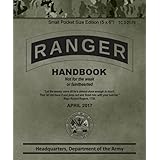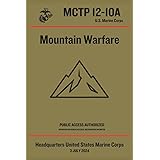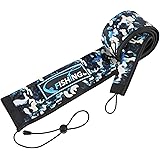Have you ever considered how an injured person might be safely moved in a remote or challenging environment by just one rescuer? In the wilderness, where advanced medical assistance can be hours or even days away, knowing how to handle an injured individual without causing further harm is paramount. The video above demonstrates a crucial technique known as the single-rescuer stomach-to-back ‘spine-friendly’ roll, an essential skill for anyone involved in outdoor activities or emergency response.
The Critical Need for Spine-Friendly Patient Movement in Remote Settings
When an accident occurs in the wilderness, the immediate priority is always patient safety. This is especially true when a spinal injury is suspected. Such injuries, though not always immediately obvious, can have devastating long-term consequences if mishandled. Statistics suggest that a significant percentage of spinal injuries, possibly around 10-25% in some studies focusing on trauma, are initially incomplete and can be exacerbated by improper movement during rescue, leading to worsened neurological outcomes.
In austere environments, resources are often limited, and a single rescuer may be faced with the daunting task of stabilizing and preparing a patient for evacuation. Therefore, techniques that allow for safe patient repositioning with minimal personnel are indispensable. The ‘spine-friendly’ approach ensures that any movement is executed with extreme care, aiming to keep the spine as stable as possible, thereby minimizing the risk of secondary injury to the spinal cord.
Mastering the Single-Rescuer Stomach to Back Roll: A Step-by-Step Guide
The single-rescuer stomach to back roll is designed to safely move a patient from a prone (face down) position to a supine (face up) position, which is often necessary for conducting a thorough patient assessment or initiating treatment. Each step is deliberately chosen to maintain spinal alignment.
Initial Patient Assessment and Preparation
Before any physical movement is initiated, a rapid assessment of the patient’s condition and the surrounding environment is crucial. This includes checking for immediate threats, assessing the patient’s consciousness, and looking for obvious injuries. It is also important to communicate with the patient, if they are responsive, to explain what will be done and to gain their cooperation. The area immediately around the patient should be cleared of debris to ensure a smooth rolling surface.
Executing the Roll with Precision
As demonstrated in the accompanying video, the process begins with the rescuer positioned face-to-face with the patient. This allows for direct observation and communication. Furthermore, proximity enables optimal body mechanics for the rescuer, reducing strain and increasing control over the patient’s movement. The subsequent steps are carefully orchestrated:
- **Arm Positioning:** The patient’s arm closest to the rescuer, which would be the opposite arm of the patient relative to the direction of the roll, is carefully straightened alongside their body. This step is critical; if the arm remains bent or outstretched, it will inevitably obstruct the roll, creating an uneven pivot point and potentially causing an unsafe, jerky motion that could compromise spinal integrity. A smooth, even roll is paramount for patient safety.
- **Hand Placement for Control:** One hand of the rescuer, specifically the one closer to the patient’s head, is positioned carefully under their shoulder and then wraps around to cradle the back of the neck. This provides essential support for the head and neck, which are highly vulnerable in suspected spinal injuries. The other hand is placed firmly near the patient’s hip. A secure grip is ensured by either grasping a substantial amount of clothing or applying direct pressure to the hip. This dual-point contact provides leverage and distributes the force evenly across the patient’s torso, facilitating a controlled rotation.
- **Rescuer’s Body Mechanics:** The rescuer’s knees are positioned as close to the patient as possible. This proximity reduces the distance over which the patient must be moved and significantly enhances the rescuer’s leverage. The power for the roll is generated primarily from the rescuer’s legs and core, not their back. This technique safeguards the rescuer from injury while providing the necessary strength for a controlled movement.
- **The Roll and Follow-Through:** With all positions secured, the patient is slowly and deliberately rolled towards the rescuer. This movement is executed as a single, coordinated unit, preventing any twisting or bending of the torso. Support for the head and neck is maintained throughout the entire roll and after the patient has reached the supine position. It is critical that the rescuer does not abruptly release the patient’s head or torso, as this could lead to an uncontrolled drop or snap, negating the ‘spine-friendly’ intent of the maneuver. Continuous support is provided until the patient is fully stabilized in the new position.
Beyond the Basics: Considerations for Wilderness Patient Handling
While the single-rescuer stomach to back roll is a fundamental technique, real-world wilderness rescues often present additional complexities. The terrain might be uneven, slippery, or steep, further complicating patient movement. Weather conditions, such as rain, snow, or extreme temperatures, can also impact rescuer and patient safety and dexterity. Consequently, adaptability and critical thinking are always required.
Approximately 70% of wilderness incidents, particularly those involving a single rescuer, face significant delays in the arrival of professional medical help, underscoring the importance of proficient basic skills. Therefore, rescuers must be prepared to improvise safely, perhaps using backpacks or natural features to provide additional support or stabilization if needed. Continuous reassessment of the patient’s condition is paramount during and after any movement. Vital signs, neurological status, and pain levels should be monitored closely to detect any changes that might indicate worsening injury.
Why “Spine-Friendly” Matters: Preventing Further Injury
The term “spine-friendly” is not merely a suggestion; it represents a commitment to patient welfare by minimizing the risk of aggravating a potential spinal cord injury. The spinal cord is a delicate structure, and even slight movements can cause compression or tearing, leading to permanent neurological damage, including paralysis. Proper handling, as demonstrated with the single-rescuer stomach to back roll, aims to prevent any unnecessary motion of the head, neck, and torso relative to each other.
By using passive constructions in our instruction, the focus is kept squarely on the patient and the required actions to protect them. For example, “the arm is straightened” emphasizes the action performed on the patient, rather than who performs it. This methodical approach ensures that the fundamental principles of spinal immobilization are always at the forefront of the rescuer’s mind. When these techniques are meticulously followed, the likelihood of a positive outcome for the patient is significantly increased.











